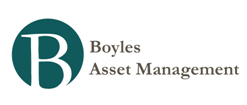Hussman Weekly Market Comment: Sixteen Cents: Pushing the Unstable Limits of Monetary Policy
This week's comment focuses on the current, unstable stance of monetary policy. We'll start by reviewing some important monetary relationships. While I've included a variety of graphs and equations to support the analysis, I've boldfaced several key points, and my hope is that the text has enough detail that you can skip some of the equations if you're not a math fan.
…..
The disturbing fact about this, however, is that inflation dynamics can potentially become unstable when a massive stock of base money is being kept in check by very low interest rates. This is because small increases in interest rates from near-zero levels imply huge changes in liquidity preference and velocity. If those changes are not offset by opposite and proportional changes in the monetary base, strong inflation pressures are likely to follow. Historically, it has usually taken an extended period of such inflation pressures (sustained over 6-12 months) before the implied inflation pressures are actually reflected in price levels. Temporary differences between the actual and implied GDP deflator are not very informative unless they are sustained.
Still, any sustained external pressure on short-term interest rates, even in the range of a quarter-percent or more, would require a rapid contraction in the Federal Reserve's balance sheet, or the upward pressure on velocity would create very strong incipient pressures on inflation.
…
Because the size of the monetary base has become so extreme relative to historical norms, the likely price pressures in response to even modestly higher short-term interest rates are equally extreme.
.....
Present considerations
What factors could create pressures on inflation? By itself, monetary policy often involves a simple see-saw, where higher monetary base results in lower short-term interest rates, which induce people to hold that additional base money. Historically, both in the U.S. and internationally, the primary source of inflation pressure has been growth in unproductive government spending (i.e. spending that creates demand without materially expanding productive capacity - think Germany paying striking workers in the Ruhr). Now, it's very often true that government spending is actually financed by printing money, but in that case, we've long argued that the fiscal event is what drives inflation. Simply shifting the composition of government liabilities between Treasury debt and money (without changing fiscal policy) generally causes a change in the profile of interest rates: primarily affecting short-term rates to ensure that the new outstanding quantity of base money is held (as we've seen above).
While not all U.S. government spending is unproductive, it is easily seen that the inflation pressures of the late-1960's and 1970's accompanied a period where government spending was sharply expanding as a share of GDP (the 1981-82 recession provoked a final gasp of spending even as inflation receded from its peak). While the disinflation since the early 1980's has had some fits and starts, it is also clear that this period has - until recently - been characterized by relatively stable fiscal policy. From this perspective, the recent explosion of government spending as a share of GDP is a source of longer-term inflation concern.
…..
In any event, completing the Fed's planned purchases under QE2 will require a decline in 3-month Treasury bill yields to just 0.05% in order to avoid inflationary pressure. Otherwise, liquidity preference will not expand sufficiently to absorb the addition to base money, even if we assume real GDP growth at a 4% rate. Given the extreme stance of monetary policy, the avoidance of inflationary pressures increasingly relies on a very persistent willingness by the public to directly or indirectly hold the outstanding quantity of base money in the financial system. Small errors will have surprisingly large consequences. This is not a stable equilibrium.
- Links
FT interview with Google co-founder and CEO Larry Page (LINK) Related books: How Google Works, In The Plex Henry Blodget sits down with Clay Christensen (LINK) Related books: HEREHussman Weekly Market Comment: Losing Velocity: QE and the Massive Speculative...
- Hussman Weekly Market Comment: Out On A Limb - An Investor's Guide To X-treme Monetary And Fiscal Conditions
Government intervention in the U.S. economy is approaching the point where probable long-term costs exceed short-term benefits – straining to maintain the pace of extraordinary fiscal and monetary measures that have repeatedly nudged the U.S. economy...
- Hussman Weekly Market Comment: Charles Plosser And The 50% Contraction In The Fed's Balance Sheet
Especially good/important commentary from John Hussman this week.In my view, this is a major problem for the Fed, but is the inevitable result of pushing monetary policy to what I've called its "unstable limits." High levels of monetary base, per...
- Hussman Weekly Market Comment: Bernanke Leaps Into A Liquidity Trap
Simply put, monetary policy is far less effective in affecting real (or even nominal) economic activity than investors seem to believe. The main effect of a change in the monetary base is to change monetary velocity and short term interest rates. Once...
- Hussman Weekly Market Comment: The Recognition Window
Over the course of the market cycle, one of the primary areas of risk for stocks (and conversely, one of the best periods for Treasury bonds) is typically the "recognition window" where economic activity begins to deviate from the upward trend that is...

